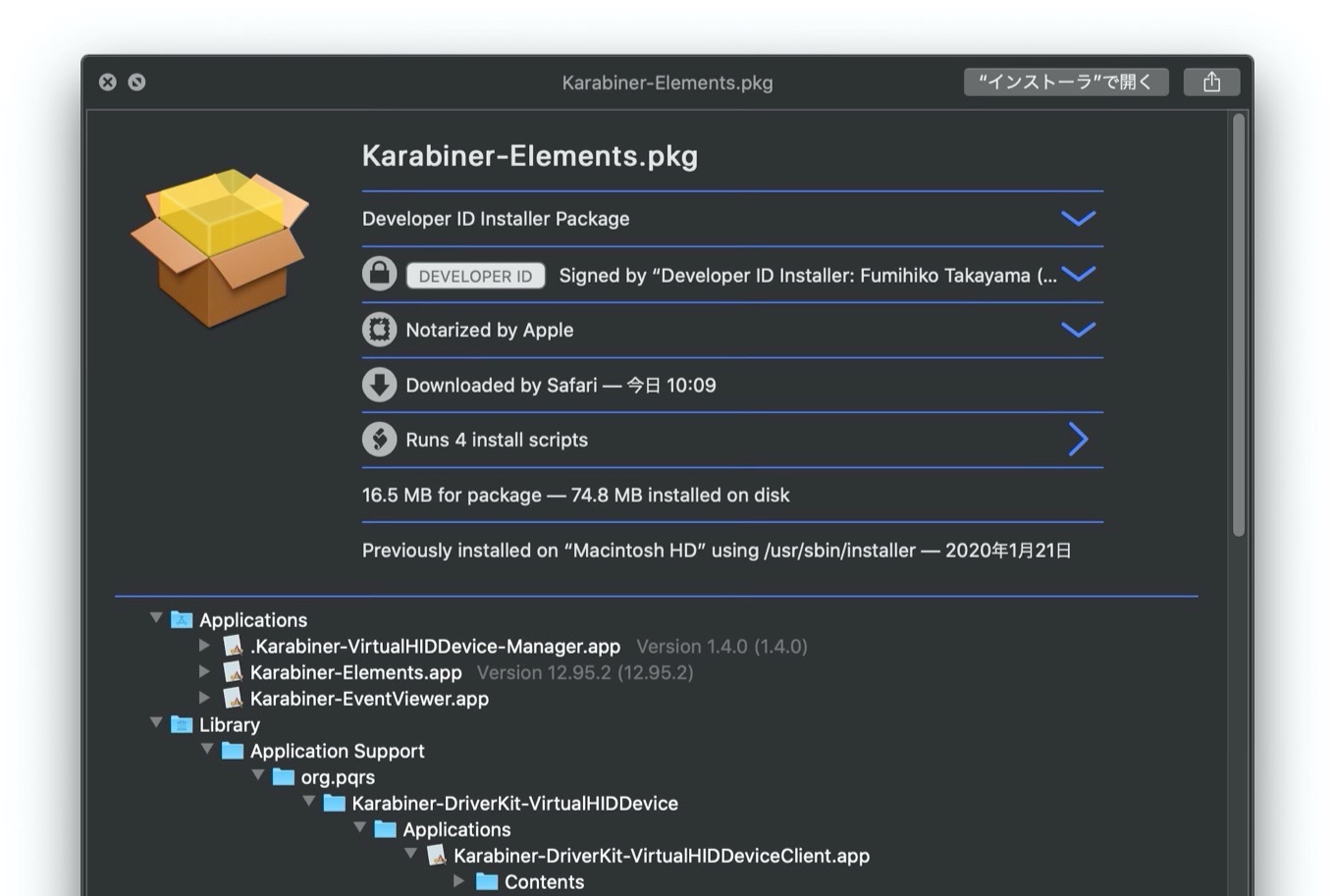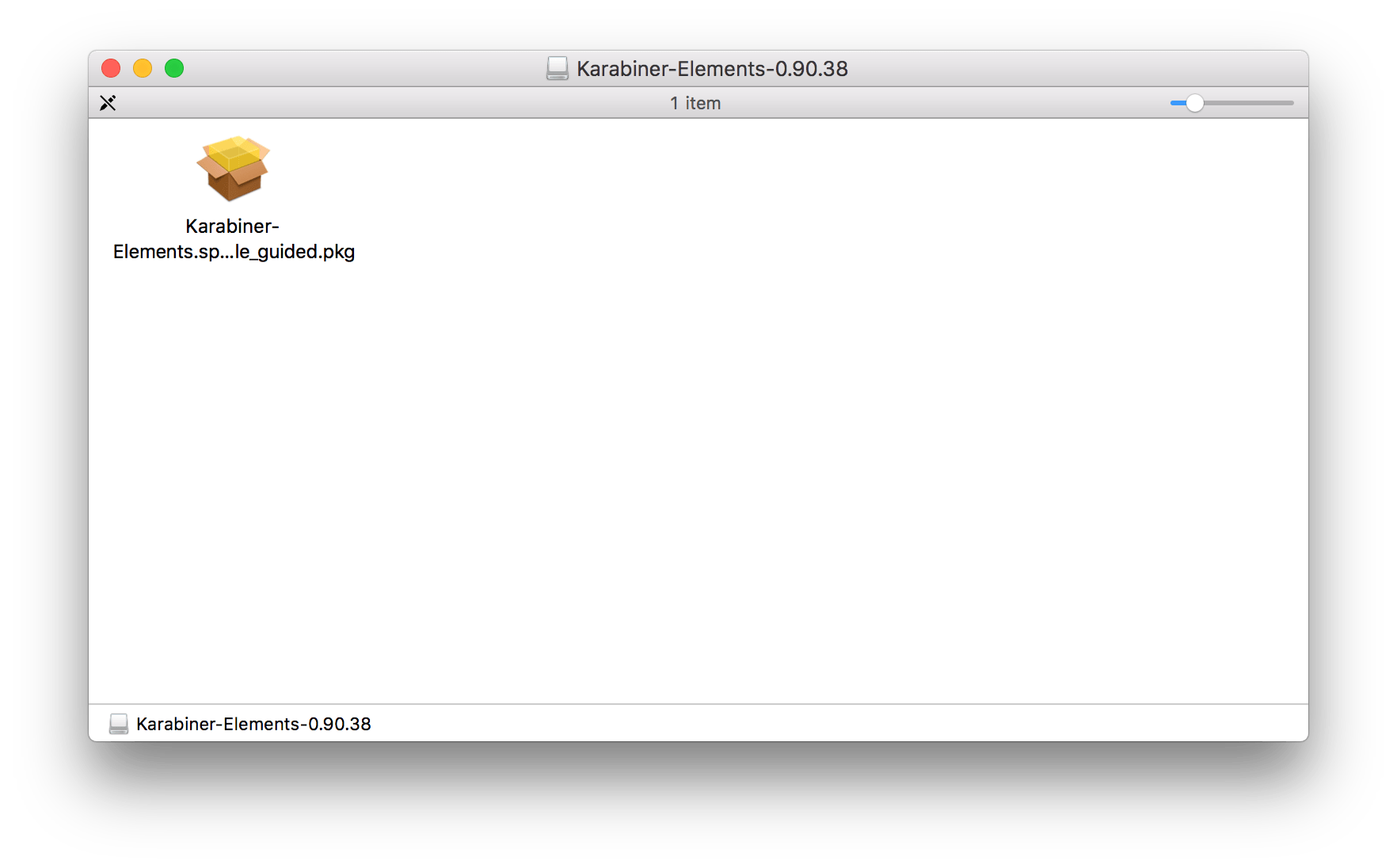
- #KARABINER ELEMENTS MACOS INSTALL#
- #KARABINER ELEMENTS MACOS FULL#
- #KARABINER ELEMENTS MACOS PRO#
- #KARABINER ELEMENTS MACOS CODE#
- #KARABINER ELEMENTS MACOS MAC#
Karabiner-Elements has turned out to be extremely useful and far more than just an amusing configuration experiment. I’m now watching how I work to see what steps I repeat and if those can be assigned to a keyboard macro. The numbers 1 and 2 are to remove or add carriage returns within my text using TextSoap. That text is then pasted into TaskPaper where I keep my test plan notes. J is to capture the number and title of a Jira ticket using TextSoap. For example, S is to capture a screenshot using SnagIt.

With that done, I have assigned keys to different functions I find myself repeating.

#KARABINER ELEMENTS MACOS CODE#
Then using Groovy, I wrote a small piece of code to write out the statements for the rest of the keyboard. Using the Karabiner Complex Modification website, I put together a couple of key combinations.
#KARABINER ELEMENTS MACOS FULL#
I’ve hooked up a full sized keyboard and programmed all the keys to be shortcuts. On my work machine I’ve taken that idea one step further.
#KARABINER ELEMENTS MACOS MAC#
I previously wrote that I bought a gamepad keyboard, hooked it up to my Mac and configured it with Karabiner-Elements. For those that want to use an external keyboard, the open source (software and hardware) Ultimate Hacking Keyboard (UHK) allows this functionality.AugSetting up a secondary macro keyboard with Karabiner-Elements setxkbmap sets the keyboard layout for the current X session only, you can set it permanently on xinitrc, xprofile or X configuration files. Xcape runs as a daemon, so you need to ensure it starts on login. Then set Caps Lock to act as Menu key when pressed for less than the timeout (the default is 500 ms): For systemd, you can use the following service: ĮxecStart=/usr/bin/nice -n -20 /usr/bin/udevmon -c /etc/udevmon.yamlĪs an alternative or on older systems without udev, you can use setxkbmap and xcape.įirst change Caps Lock to act as a Ctrl modifier: Nice -n -20 /usr/bin/udevmon -c /etc/udevmon.yaml For caps2esc, you can use the following /etc/udevmon.yaml file: - JOB: "intercept -g $DEVNODE | caps2esc | uinput -d $DEVNODE" Then you need to configure Interception to use this plugin.
#KARABINER ELEMENTS MACOS INSTALL#
Install Interception Tools and a plugin such as caps2esc or interception-k2k. You can achieve this on Waylan, a TTY or X11 using Interception Tools, which talks directly with libevdev and libudev. For example, the Dell Precision 7510 is bulky and has a trackpad that feels like sandpaper the Lenovo X1 (a very nice system) lacks a Thunderbolt port etc.ģ) External keyboards are also a non-starter because of the laptop requirement an external keyboard on the plane or train is not happening. None are comparable to the combined power, size, feel, and style of the Apple top end products, albeit at a premium price. I've tried Dell, HP, Lenovo, Acer systems and looked at a lot more. Karabiner's dual function approach is, IMHO, far and away, the most effective in that it provides control key symmetry on the keyboard home row, and for all applications!Ģ) Different hardware is also likely to be suggested. Many have been tried with varying degrees of satisfaction. So my question is: what programming advice would you suggest for solving this problem? Especially one that can be developed in hours, days or weeks rather than in months.ġ) There are different approaches involving changes of behavior such as swapping control and command keys. And no doubt there may be other approaches as well. Now I am wrestling with porting Karabiner or creating a new tool entirely. The Karabiner author writes that xbindkeys and rbindkeys do key remapping but at first glance they do not seem to handle the dual function behaviors.

Question: since Karabiner is an OS X only tool with no readily available Gnu/Linux counterpart, it looks like I will have to write and/or modify some code to achieve the capslock and return key dual function behaviors Karabiner enables. Disappointed with recent Apple decisions for both hardware and software, I am now moving back to Gnu/Linux (Ubuntu if it matters) but sticking with Mac laptops.

I prevented RSI onset by using the Karabiner tool to make two small but very important changes: 1) changing the capslock key to generate a menu (f13) key when pressed alone and a control key modified keycode when pressed with another key 2) changing the return key in a similar fashion, get return when pressed alone and a control key modified keycode when pressed with another key. More importantly, as a heavy Emacs user, the switch to Mac was painful, with the Apple standard short keyboard both maddening and unavoidable.
#KARABINER ELEMENTS MACOS PRO#
Background: for the past five years or so, I have been using Mac hardware (high end MacBook Pro laptops for the most part) and software after many years of using Gnu/Linux on typical PC hardware with ergonomic keyboards.


 0 kommentar(er)
0 kommentar(er)
